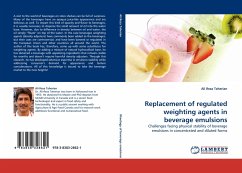This book involves a detailed study on nucleophilic sulfonation of decyl halides and benzyl halides in o/w microemulsions and emulsions formed with the two-tailed cationic surfactants dioctyldimethylammonium chloride/bromide, R2(Me)2N+Cl-/Br-. At the concentrations employed, phase separation occurred and emulsions formed in most of the samples. The chloride counterion reacted with the halide precursors to form an intermediate, decyl chloride, and a side product, benzyl chloride. The tendency of sodium decyl sulfonate to remain at the interface resulted in lower conversion with increasing decyl halide concentration, while the formation of a separate benzyl halide phase produced the same effect. Increasing the mole ratio sodium sulfite/halide precursor increased the conversion to the final product in a manner which supports an ion exchange followed by a second order nucleophilic substitution mechanism. A single-pseudophase model described the sulfonation of decyl halides, while a three-pseudophase model was applicable to benzyl halides. The three new assumptions employed in the models.
Bitte wählen Sie Ihr Anliegen aus.
Rechnungen
Retourenschein anfordern
Bestellstatus
Storno








